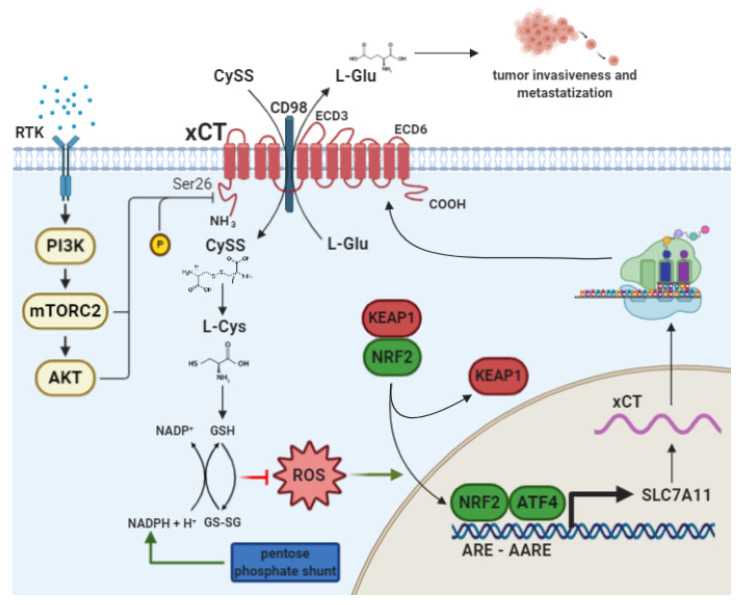Figure 1.
xCT function and transcriptional regulation. The cystine/glutamate antiporter xCT exports intracellular glutamate and imports extracellular cystine. Exported glutamate is involved in tumor microenvironment shaping, promoting invasiveness and metastasization. The imported cystine is reduced to cysteine and used for the biosynthesis of GSH, which is responsible for cancer cell protection from reactive oxygen species (ROS) excess due to genomic instability, altered metabolism and external insults, such as chemotherapy. ROS induce the upregulation of xCT, which destabilizes the KEAP1-NRF2 complex; NRF2 translocation into the nucleus and its binding to the ARE sequence on the SLC7A11 gene promoter lead to xCT mRNA transcription and protein production. Amino acid depletion also induces xCT upregulation through ATF4, which binds to the Amino Acid Response Element (AARE) sequences on the SLC7A11 gene promoter. The mTORC2/AKT signaling axis is another relevant pathway in xCT post-translational modulation that, when activated, inhibits xCT through Ser26 phosphorylation. This figure was created with BioRender.com.

